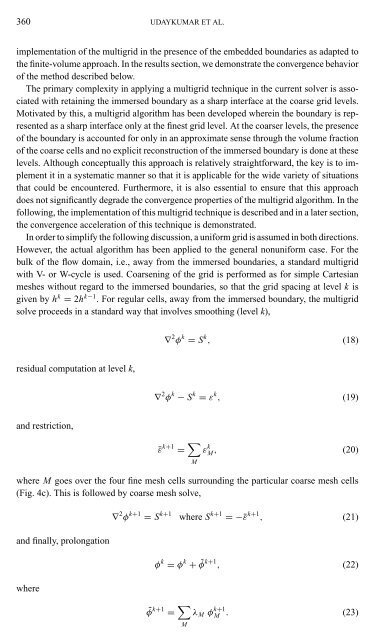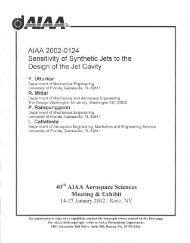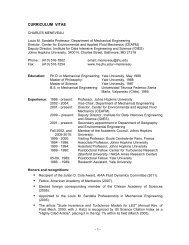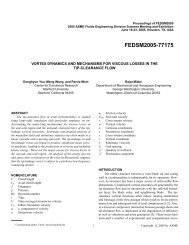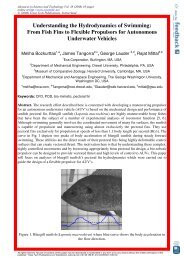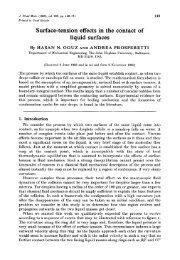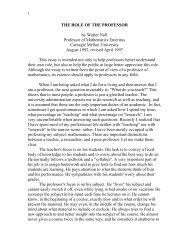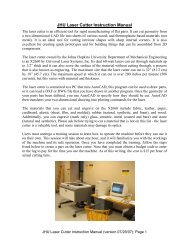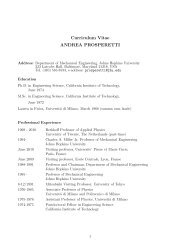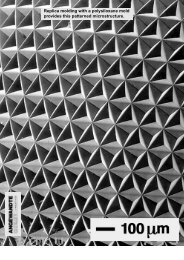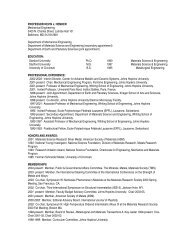A Sharp Interface Cartesian Grid Method for Simulating Flows with ...
A Sharp Interface Cartesian Grid Method for Simulating Flows with ...
A Sharp Interface Cartesian Grid Method for Simulating Flows with ...
Create successful ePaper yourself
Turn your PDF publications into a flip-book with our unique Google optimized e-Paper software.
360 UDAYKUMAR ET AL.<br />
implementation of the multigrid in the presence of the embedded boundaries as adapted to<br />
the finite-volume approach. In the results section, we demonstrate the convergence behavior<br />
of the method described below.<br />
The primary complexity in applying a multigrid technique in the current solver is associated<br />
<strong>with</strong> retaining the immersed boundary as a sharp interface at the coarse grid levels.<br />
Motivated by this, a multigrid algorithm has been developed wherein the boundary is represented<br />
as a sharp interface only at the finest grid level. At the coarser levels, the presence<br />
of the boundary is accounted <strong>for</strong> only in an approximate sense through the volume fraction<br />
of the coarse cells and no explicit reconstruction of the immersed boundary is done at these<br />
levels. Although conceptually this approach is relatively straight<strong>for</strong>ward, the key is to implement<br />
it in a systematic manner so that it is applicable <strong>for</strong> the wide variety of situations<br />
that could be encountered. Furthermore, it is also essential to ensure that this approach<br />
does not significantly degrade the convergence properties of the multigrid algorithm. In the<br />
following, the implementation of this multigrid technique is described and in a later section,<br />
the convergence acceleration of this technique is demonstrated.<br />
In order to simplify the following discussion, a uni<strong>for</strong>m grid is assumed in both directions.<br />
However, the actual algorithm has been applied to the general nonuni<strong>for</strong>m case. For the<br />
bulk of the flow domain, i.e., away from the immersed boundaries, a standard multigrid<br />
<strong>with</strong> V- or W-cycle is used. Coarsening of the grid is per<strong>for</strong>med as <strong>for</strong> simple <strong>Cartesian</strong><br />
meshes <strong>with</strong>out regard to the immersed boundaries, so that the grid spacing at level k is<br />
given by h k = 2h k−1 . For regular cells, away from the immersed boundary, the multigrid<br />
solve proceeds in a standard way that involves smoothing (level k),<br />
∇ 2 φ k = S k , (18)<br />
residual computation at level k,<br />
∇ 2 φ k − S k = ε k , (19)<br />
and restriction,<br />
¯ε k+1 = ∑ M<br />
ε k M , (20)<br />
where M goes over the four fine mesh cells surrounding the particular coarse mesh cells<br />
(Fig. 4c). This is followed by coarse mesh solve,<br />
and finally, prolongation<br />
where<br />
∇ 2 φ k+1 = S k+1 where S k+1 =−¯ε k+1 , (21)<br />
φ k = φ k + ˜φ k+1 , (22)<br />
˜φ k+1 = ∑ M<br />
λ M φ k+1<br />
M . (23)


